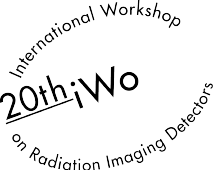Speaker
Description
Gaseous time projection chambers (TPC) is a very attractive detector technology for particle tracking. Efficient discrimination of the events through pattern recognition of the topology of primary ionisation tracks is a major motivation for such type of TPCs. High-pressure xenon (HPXe) time projection chambers (TPCs) gained increasing importance during the last years due to their application to rare-event detection such as double-beta decay (DBD), double-electron capture (DEC) and directional dark matter (DDM). Gaseous xenon TPCs offer important advantages when compared to liquid xenon and double phase xenon TPCs: interaction of rare events in the gas allows to determine the event topological signature, as demonstrated for DBD and DEC detection in contrast to interaction in the liquid, where the extremely reduced dimensions of the primary ionisation trail rules out any possible topology-based pattern recognition. In addition, the achieved energy resolution in interactions in the gas is much better than that achieved in the liquid, having also a positive impact on the background reduction. Along this line, optical TPCs based on electroluminescence (EL) amplification of the primary ionisation signal present much better energy resolution than what is achieved in TPCs based on charge avalanche readout being, therefore, the most competitive alternative. The Next-White (NEW) detector is currently the World’s largest radio-pure high pressure xenon gas time projection chamber with electroluminescence readout. NEW has been operating at Canfranc Underground Laboratory (LSC) since December 2016.
However, drift velocity and diffusion play a major role in the TPC tracking performance, being the large electron diffusion in pure Xe a limiting factor for the capabilities of background discrimination based on the topological signature. In the HPXe TPC used by the NEXT collaboration, electron transverse diffusion may be as high as 10 mm/sqrt(m): after one meter of drift, a point-like ionisation deposit becomes a cloud distributed as a Gaussian of 10 mm sigma in the direction perpendicular to the electric field. This situation is far from ideal and can be largely improved by adding molecular electron coolants to the main gas. By adding a molecular gas to pure xenon, new molecular degrees of freedom from vibrational and rotational states are made available for electron energy transfer in inelastic collisions and the energy distribution of the ionisation electron cloud in the drift region tends to build up around the energy of the first vibrational level, typically ~ 0.1 eV, even in the presence of sub-percent concentrations of the additive. The thermal diffusion limit gives a diffusion factor of ~ 1.5 mm/ sqrt(m) for a drift field of 250 V/cm.
The presence of molecular species in a noble gas was believed to dramatically reduce the EL yield. If an electron has a significant probability of colliding with a molecular impurity before it obtains from the electric field sufficient energy to excite a noble gas atom, it may lose part of its energy without producing EL photons. Besides electron cooling, additional losses of scintillation originate from excimer quenching, photo-absorption and electron attachment, with impact on the statistical fluctuations of the EL. The reduction of the EL yield and respective statistical fluctuations depend on the amount and type of impurity present in the gas.
In this talk, we present an overview of the NEW TPC (10 bar Xe, with a length of 664.5 mm and a diameter of 522 mm) and its performance characteristics. We also present the results from a campaign designed to systematically add several molecular gases (CO2, CH4 and CF4) to Xe, at minute concentration levels to find a suitable mixture able to reduce diffusion and improve the topological discrimination of the events, without compromising the performance of the TPC significantly in terms of EL yield and energy resolution.
